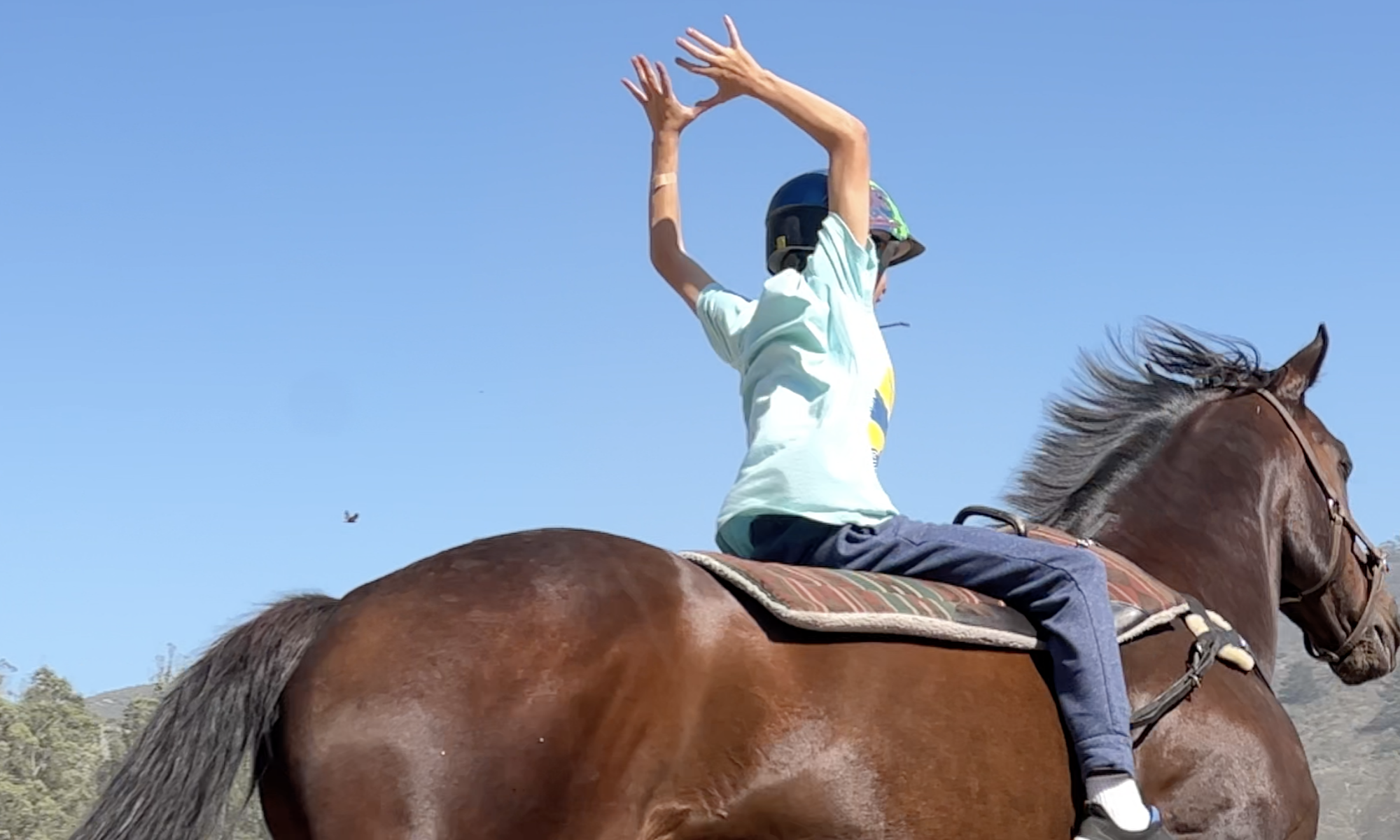Davis Finch Shares His Story of Watching How This Amazing Horse Changed Over Time

TB, CH, G, FOALED MAY 10, 2002
( KINGMAMBO – OUR FAIR LADY, BY THEATRICAL (IRE)
5 starts 0 wins, 2 Seconds, 1 third winnings of $20,400
When I first toured Square Peg, back in 2011 at Canyon Creek ranch off
highway 92, I met several horses. One of the most memorable was an excitable 9-
year-old chestnut son of KingMambo with the barn name Stan. An exquisite
gelding who raced under the name Irresponsible King, I was told he was so
dangerous only Joell could ride him, and even she could not always stay on. When
I went to pet LeRoi, an older paint gelding who gave me my first ride, Stan butted
in and bit him in the face. Even then, he wanted to be the center of attention.
Once I got to know him better, I learned that while he was a handful, he was also
quite friendly and was eager to please, given the right circumstances. Still, I never
dreamed that someday I would ride him.
During our almost ten years at Kastl Rock ranch, Stan aged and probably
mellowed out a little, but still had his antics. He had a penchant for jumping, was a
presence in the arena and if he got loose, let’s just say it would be an exciting
afternoon. However, he also grew more trustworthy under saddle, so much so that
Joell started letting teenage volunteers ride him. Eventually she even started using
him in lessons. He was reliable on the lunge line and developed a nice trot. By the
time Square Peg left for Ocean View, he was the “old man” of the off-track
thoroughbreds but still had plenty left.
Since coming to Ocean View and living in a pasture full time, Stan has
become a schoolmaster. He is now nicknamed “grandpa” and his quirks have
become more endearing than dangerous. He loves the supplements I feed him and
greets me at the gate each time I arrive. I have started riding him and have
discovered his trot to be wonderful. While trail rides are not his thing, he is one of
Square Peg’s best horses in the arena with a good walk/trot/canter and often a calm
and happy demeanor. As the patriarch of the herd, he will show younger, more
recently arrived horses who is boss in the pasture, especially when there is food
involved. With people he is usually gentle and loves attention, snuggles and treats.
Author Davis Finch riding Irresponsible King aka: Stan
Even though he is calmer than he once was, he is still a sensitive
horse. The good side of this temperament is he is highly responsive under saddle
and reciprocates emotionally when I ride him. He is also very intelligent and
will be waiting at the gate closest to me, even if he has to cross the pasture to be
there. There are still moments when the fire that got him dubbed “the terror of Bay
Meadows” in his racing days shows through, but it is rare enough that it seems
almost quaint. Due to an old palate injury from the racetrack, he has always
roared, but now it more of a sweet purr. He is Square Peg’s beautiful and quirky
grandpa.




